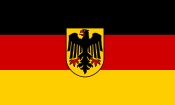“Where”! We hear your call.
Lübeck is minutes from former Eastern Germany; today, there is no border, just a roadside information board marking this former Historic crossing point into the GDR. We headed for Rostock in the state of Mecklenburg-Western Pomerania. Following as close to the Baltic coast as possible, we followed what is now Germany’s longest coastline at 354km, Lübeck to Usedom on the Polish border.
Lübeck is minutes from former Eastern Germany; today, there is no border, just a roadside information board marking this former Historic crossing point into the GDR. We headed for Rostock in the state of Mecklenburg-Western Pomerania. Following as close to the Baltic coast as possible, we followed what is now Germany’s longest coastline at 354km, Lübeck to Usedom on the Polish border.
We stopped at a small harbour close to the community of Saal. This is the view we had of the
Saaler Bodden and beyond the Baltic Sea.
Wood anemones are now flowering in the Beech woodlands, and spring is at last!
All around, there are spacious forests of deciduous trees.
Out walking, we saw a male Redstart returning from a Winter in Africa.
What a journey he has made to be in Mecklenburg!
Far out over the Saaler Bodden, we were lucky to see a WhiteTailed Eagle pursuing Shelducks, which are not small birds themselves!
Further, Inland Red Kites perch in the trees, ever watching for food. A Hooded crow gets lucky when it finds a frog, only to become the hunted as the Red Kite threatens for the meal.
On the second pass, the Red Kite won the tussle and took the Frog; it can be seen disintegrating!
Supper on the wing.
Another memorable day comes to a close.
It was a fitting end to our journey through Germany, as the sunset reflected the colours of the German national Flag.

Time has stood still for years here; avenues of beautiful specimen trees still line many roads, some still cobbled, but everything changes fast.
Otto von Bismarck once said.
“When the end of the world comes, I shall go to Mecklenburg because everything happens a hundred years later.”
For us, it is time to hit that road and head home with great memories.
Happy Days, indeed!


























































